Artefacts | Archeology | Egypt
Indonesia under Colonial rule: an art gallery
A gallery of art reflecting the time that Indonesia was under Colonial rule, allowing us to get a corresponding understanding of that time.
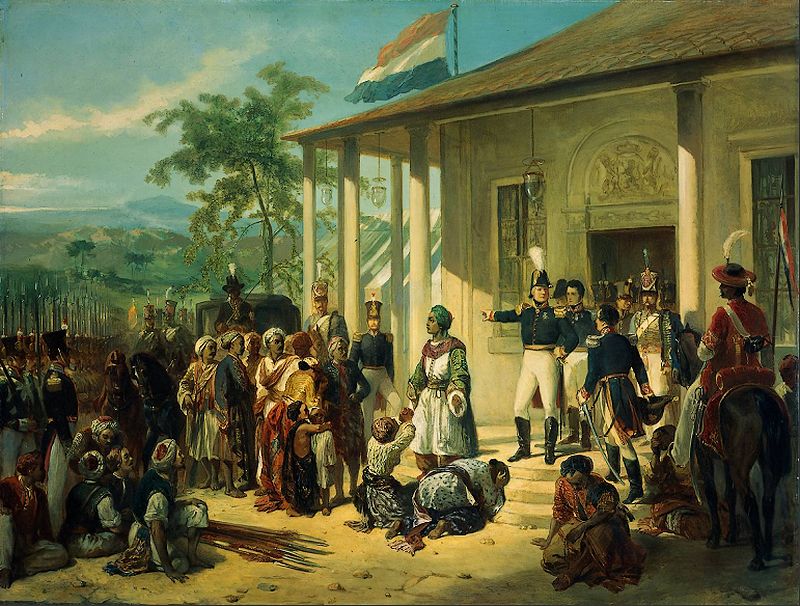
The Arrest of Diepo Negoro by Lieutenant-General Baron De Kock, Nicolaas Pieneman, c. 1830-35)
Many people don’t know that the Dutch once had a mighty colonial empire. During the Dutch ‘Golden century’ as they call it, they possessed one of the most powerful navy in the world, produced famous artists like Remrandt, Vermeer, Hals and controlled a large trade network spanning all across the world...
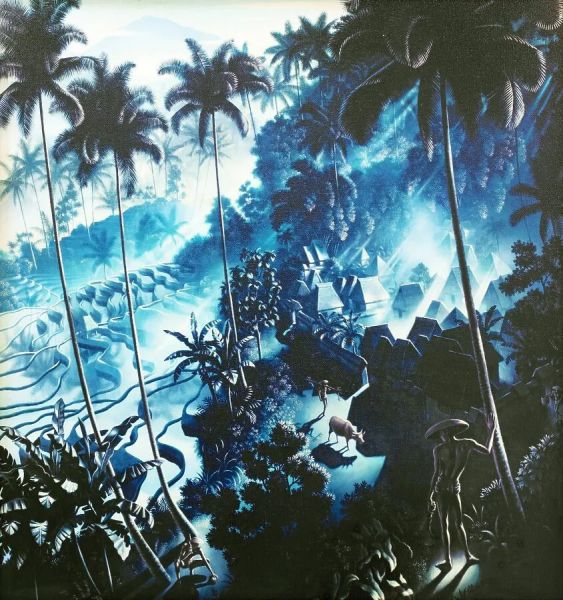
Iseh in morning light (Iseh im Morgenlicht), 1938 Walter Spies
During this ‘Golden century’ the Dutch colonized the archipelago we now know as Indonesia. They controlled this island group between 1602 and 1949. In this gallery we will use paintings to tell the history of ‘The Dutch Indies’, and simultaneously we get to enjoy the beautiful art that was created during this period.
Above we see a painting of my favorite artist capturing the Dutch Indies, Walter Spies. It captures a serene Balinese morning in the village of Iseh. We will revisit him later on in this gallery. This gallery will follow a rough chronological order, and it is supposed to tell a history of the Dutch Indies from 1602 to 1949, when the Indonesian archipelago was under Dutch rule.

Cartographic map (c. 1640), Joan Blaeu
This map was made by quite a famous cartographer. It is not accurate, but, it does show us that ‘Indonesia’ is a huge patchwork of 1000s of islands. Their geographical and cultural division made it easy for the Dutch to spread their rule over the archipelago.
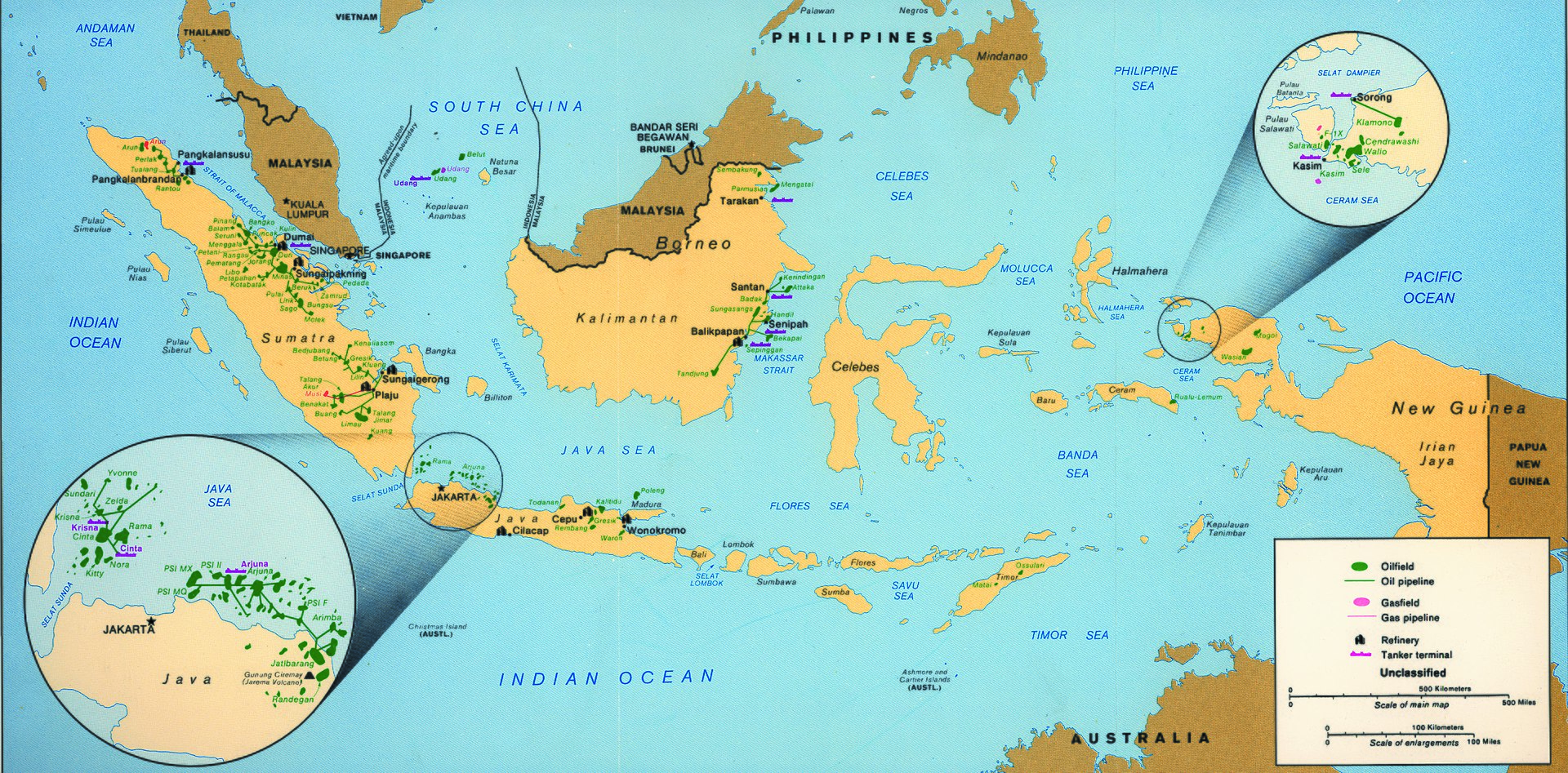
Map showing oil & gas depots in Indonesia (recent), CIA
Here we see a more accurate and current-day view of Indonesia. This map additionally shows us some major gas and oil depots found in the country (see the green indications).
When it comes to oil and raw materials, the strait of Malacca (seen at the top left corner of the map) is of tremendous economic value. Approximately 40% of today’s maritime trade passes through this strait.
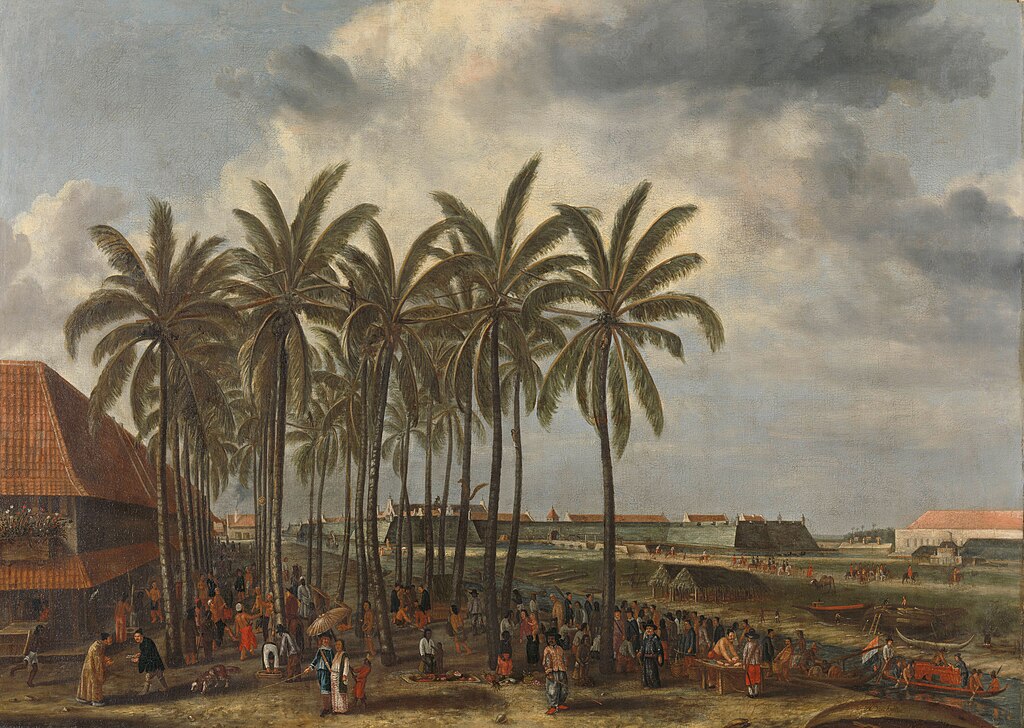
The castle of Batavia (c. 1660), Andries Beeckman
Batavia (current-day Jakarta) was the colonial capital of the Dutch East Indies. The painting ´The castle of Batavia´ shows European merchants, enslaved Africans, Chinese traders, and local Indonesians—each playing a role in the early colonial economy. By the mid-1600s, Batavia had a significant enslaved population—some estimates say up to 60% of the city’s residents were enslaved.

A VOC Ship in a storm (c. 1690), Ludolf Bakhuizen
Story: The Netherlands conducted all their trade through a private company. The Dutch East Indies Company, or the VOC, is the largest private company to have ever existed in the world. At its peak it had an estimated value of 8 billion present-day dollars.
Even though the VOC was a private company, they should be seen as an extension of the Dutch government. The VOC had almost complete authority to conduct Dutch diplomacy, raise armies and wage war. The painting above shows a beautiful example of a VOC ship. The ship’s ability to weather monstrous waves shows its proud persistence despite natural difficulties. Some might criticize such an allegory for glorifying ‘colonial persistence’ despite tough, wrathful and natural resistance; a manifest destiny* as some Americans would call it.
*Manifest destiny is a well-known belief that the United States was divinely ordained to expand westward across North America, spreading democracy and capitalism through determination and belief in their righteousness.
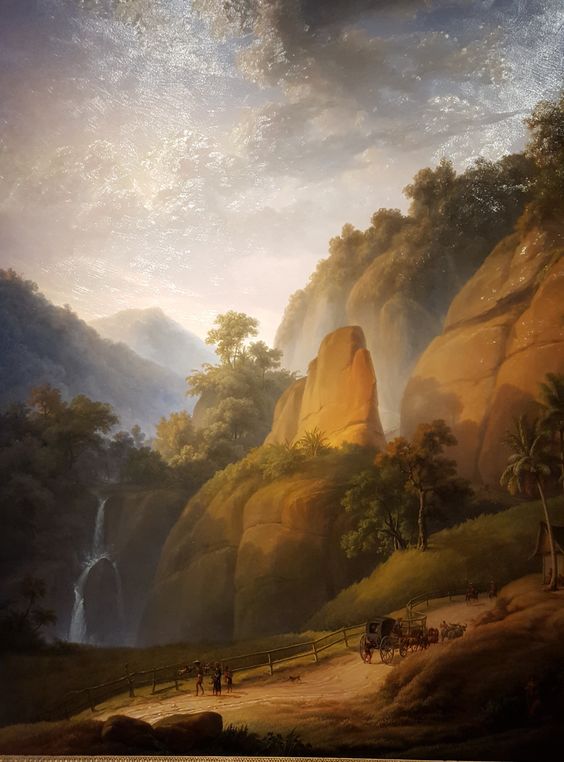
The Grote Postweg (Great Postal Road) near Rajapolah, Antoine Auguste Joseph Payen (1828).
Governor-General Herman Willem Daendels was the colonial ruler of Indonesia between 1808 and 1811. He ordered the construction of a 1,000-kilometer road across Java that was meant to be used by the Dutch, and restricted for the natives.
This road was called the ‘Grote Postweg’ and it was completed in less than one year. The Rijksmuseum of Amsterdam explains that “A href= https://www.rijksmuseum.nl/en/collection/object/The-Grote-Postweg-Great-Postal-Road-near-Rajapolah--4de6313db221394dd56425b7d9f5a712 Thousands of Indonesian workers died during its construction. The Grote Postweg afforded the Netherlands greater military control over Java.”
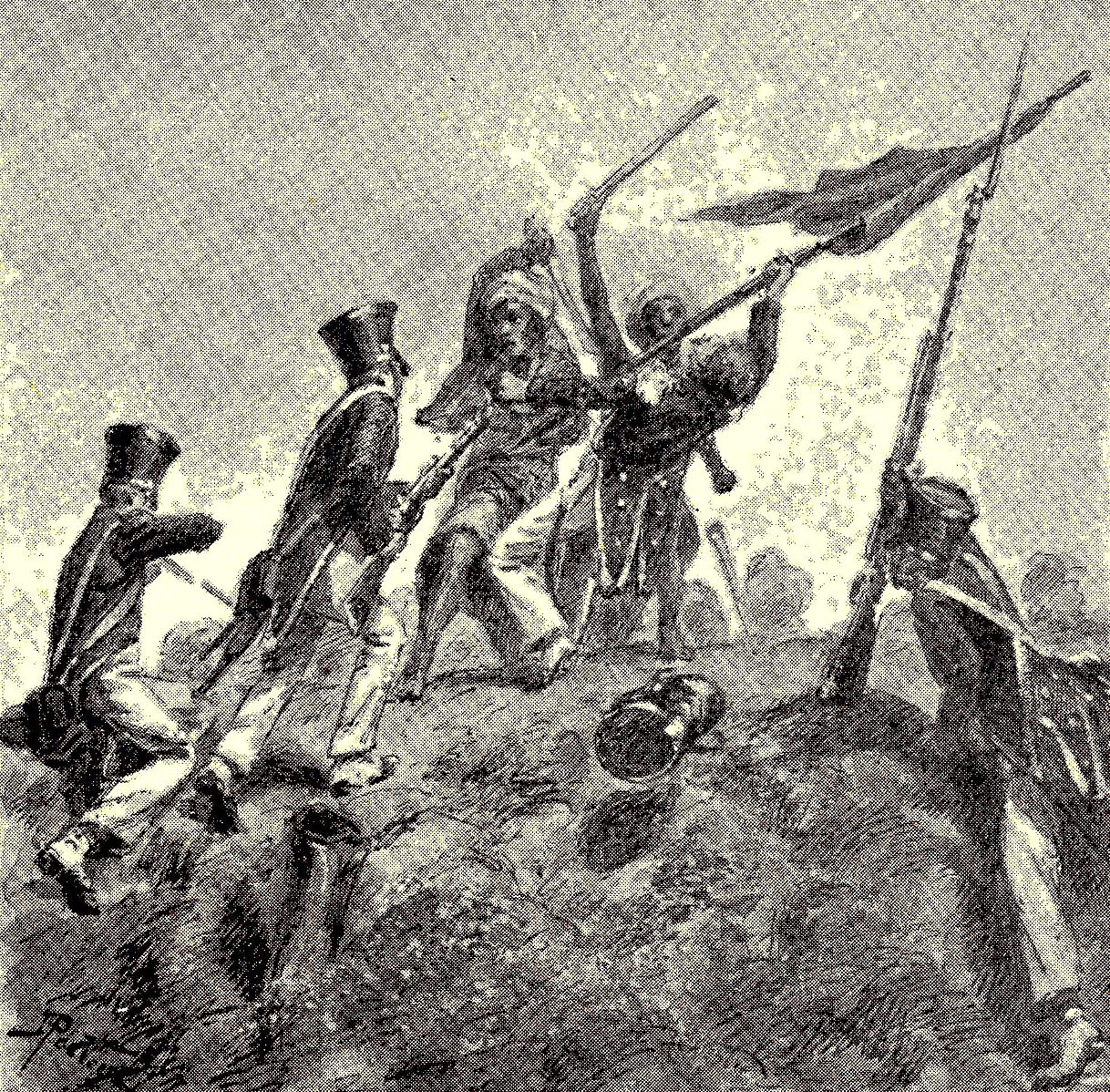
Illustration in the book ‘Wapenfeiten van het Nederlands-Indisch leger’, litograph by J.P. de Veer (1900).
The scene above shows how Dutch soldiers are fighting off rebellious muslim natives from the island of Sumatra during the Padri war in 1831. The 1800s are marked by several large-scale wars in the Dutch Indies. Between 1602 and 1799, the VOC had been able to spread its rule through diplomacy and not too much military intervention. But, after the VOC dissolved and relieved its authorities to the Dutch state in 1799, several big and long-lasting wars broke out in the Dutch Indies. These wars and the sentiment underpinning them culminated in the eventual and successful Indonesian War of Independence, finishing in 1949.
Here is a list of some of these notable wars that started in the 1800s.
- Padri War (1821–1837) Conflict between Islamic reformist Padri forces and traditionalist groups in West Sumatra, later involving Dutch colonial forces who intervened to expand control.
- Java War (1825–1830) A massive and prolonged rebellion led by Prince Diponegoro against Dutch colonial rule on Java (the main island in Indonesia) It was one of the most devastating conflicts of the era.
- Bali Wars (1846–1849; 1858–1860; 1906–1908) Series of Dutch military expeditions to subdue Balinese kingdoms resisting colonial control, including several smaller wars in the 1800s.
- Aceh War (1873–1904, with intermittent fighting extending into early 20th century) One of the longest and bloodiest wars, where the Dutch fought the Acehnese Sultanate resisting colonization in northern Sumatra.
- Padang War (1821–1837) Sometimes considered part of the Padri War but often distinguished for local conflicts in Padang region, involving Dutch and local factions.
- Banjarmasin War (1859–1863) Dutch military campaign to conquer the Sultanate of Banjar in southern Borneo.
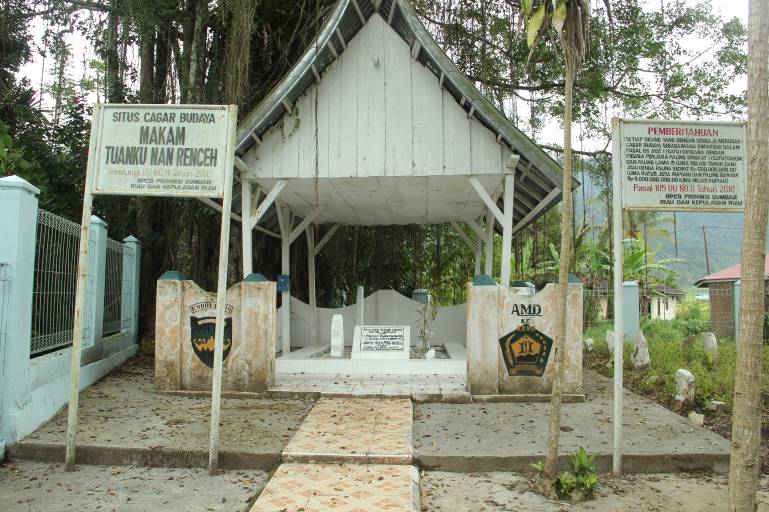
This monument in West Sumatra shows that some Indonesians see the ‘rebels’ as freedom fighters and it juxtaposes the ‘civilizing, righteous colonizers’ image the previous artwork presented. This monument is a tomb for Makam Tuanku Nan Renceh, and he was one of the fighters in the Padri War for the ‘Indonesian’ side, or better said, the rebelling West Sumatran Muslims’. The monument still stands today praising Tuanku Nan Renceh’s decolonial efforts.
.jpg)
Merapi, Eruption by Night Raden Saleh (1865).
Here we see a beautiful painting of Java’s most active volcano, which erupted in 1844. While Raden Saleh was not present during the actual eruption of the volcano, he used his stretches he made on a visit in 1842 to portray the erupting mountain. This volcano famously erupted in 2010 as well, unfortunately killing over 350 locals, and temporarily displacing more than 300,000.
.jpg)
The Lion hunt, Raden Saleh (1841).
Raden Saleh Sjarif Boestaman (same artist as previous image) lived from 1811 to 1880. He is widely regarded as the pioneer of modern Indonesian art and one of the first indigenous painters to gain international recognition. Born in Java during the Dutch colonial era, Saleh was a nobleman who combined his Javanese heritage with European artistic techniques he learned during his studies in the Netherlands and Germany. His works often feature dramatic landscapes, historical scenes, and portraits, blending Romanticism with local themes.
In Indonesia, Raden Saleh is celebrated not only as a master artist but also as a symbol of cultural pride and resistance. Many Indonesians view him as a trailblazer who challenged colonial narratives through his art, portraying Indonesian nature and history with dignity and emotional depth. His paintings are treasured as national heritage, and he is often hailed as the "father of modern Indonesian painting."
legacy
This academic article points out that Escher discussed Raden Saleh’s paintings in 1933. But Raden Saleh has a way stronger legacy when it comes to the Boschbrandth, and we will discuss why this painting made Raden Saleh internationally famous long after his death.
_Céphas,_1888.jpg)
Vrouwelijke goenoengan gedragen in de optocht ter gelegenheid van Garebeg, Kassian Céphas (1888)This 1888 photograph by Javanese photographer Kassian Céphas shows Indonesians celebrating Garebeg, an annual royal procession in Yogyakarta marking the Islamic New Year and the Prophet Muhammad’s birth. The image features a ceremonial effigy called a goenoengan, carried by members of the royal court or religious leaders during the event. Kassian Céphas was the first indigenous Javanese professional photographer, trained at the request of Sultan Hamengkubuwana VI. His work provides invaluable insight into Javanese culture and royal life during the late 19th century.
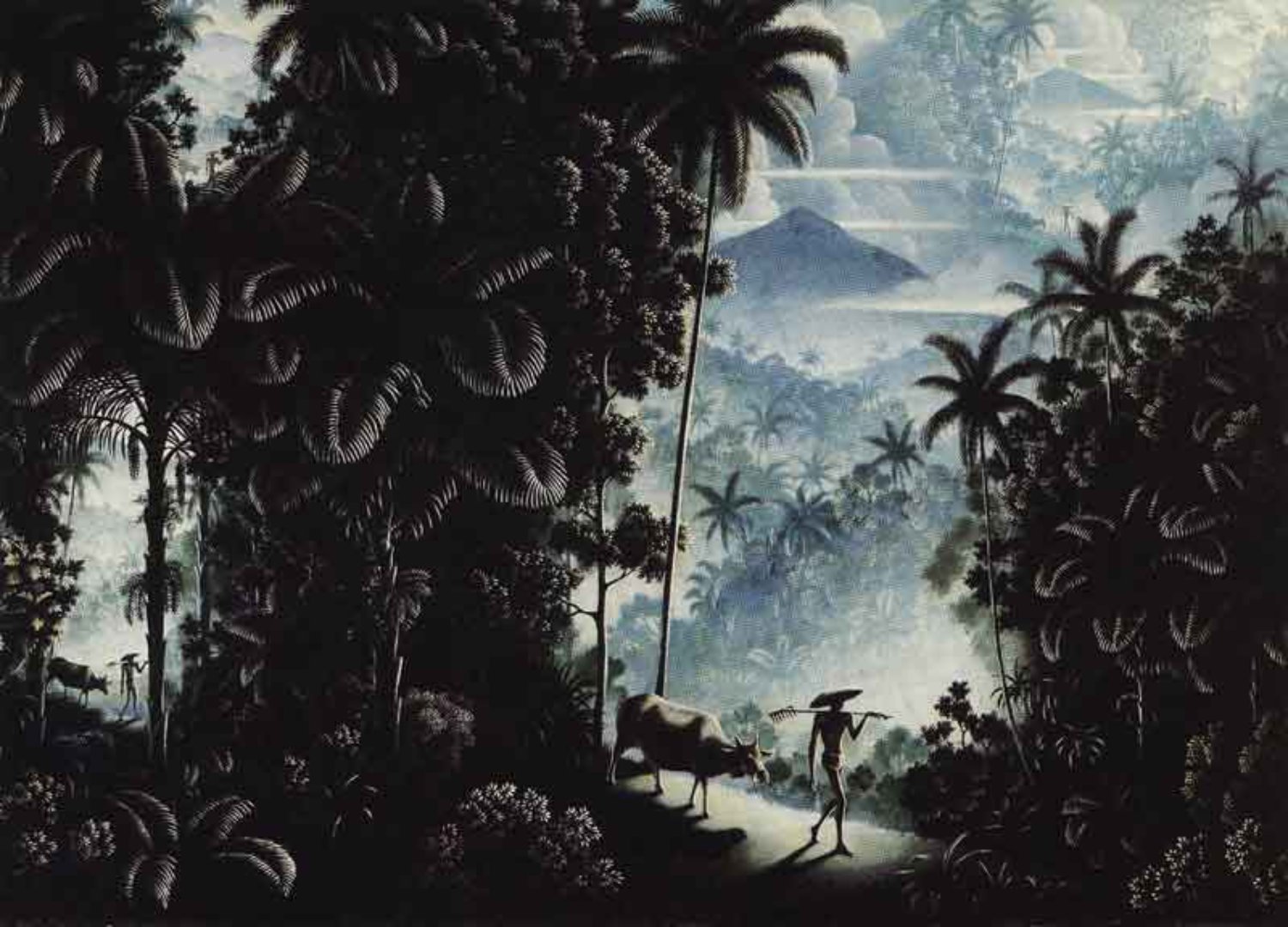
Balinese Landscape with Mount Agung (1939), Walter Spies
Another beautiful Balinese painting by Walter Spies.
As mentioned before, Walter Spies is my favorite artist capturing the Dutch Indies. He blends realistic detail with a soft, almost atmospheric Impressionist touch.
Walter Spies also inspired the The Pita Maha movement, which sought to promote Balinese traditional and modern art globally while remaining culturally integer and protecting the culture from commercial exploitation.
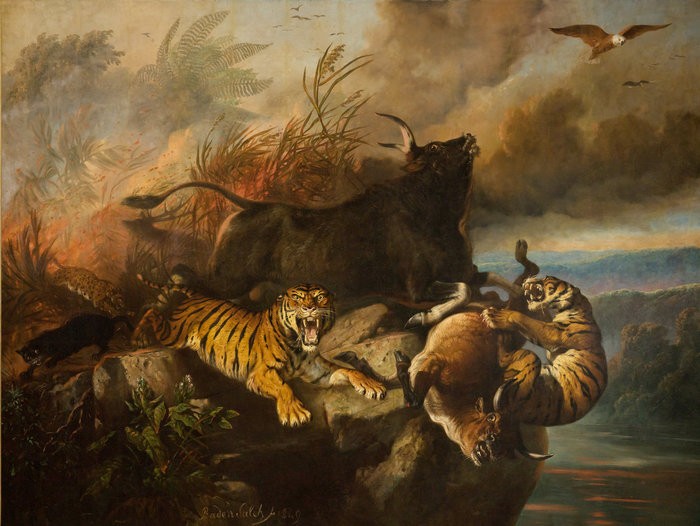
Boschbrand (1849), Raden Saleh In our article going over Dutch violence and reputational damage surrounding Indonesia´s War of Independence, we discuss the painting shown here above. In this article, we explain that ‘When Dutch art historian Marie-Odette Scalliet went through a neglected Dutch royal collection in an attic in 2007 she rediscovered this painting after it had been considered lost for many years. The painting was restored and presented to the Dutch royal family once more. But what happened next caused upheaval not only in Indonesia but also in the Netherlands itself: the Dutch royal family sold the artwork in 2014 to the National Gallery of Singapore for an estimated $3–5 million.´
Sketch of Bung Karno (c. 1965), Dullah
This painting depicts a group of Indonesian revolutionary fighters, with ‘Bung Karno’ in white (notably not in the center) giving them a speech and encouraging them. Bung Karno is better known as Sukarno, the man most strongly attributed to the post-world-war Indonesian independence movement.
This painting was created by Dullah, who was appointed in the 1950s as the official palace painter by President Sukarno, after he became Indonesia’s first head of state. Dullah is a native Indonesian painter from Central Java, and is known for his depictions glorifying Indonesia’s revolutionary struggle.
As we have seen in this gallery (through the painting ‘Boschbrand’), the struggle for decent treatment is still ongoing in Indonesia. In our article about Dutch malpractice relating to Indonesia’s independence we continue this conversation. Regardless, I hope this gallery has given you some understanding of Indonesian art, heritage and history.
(end of gallery).